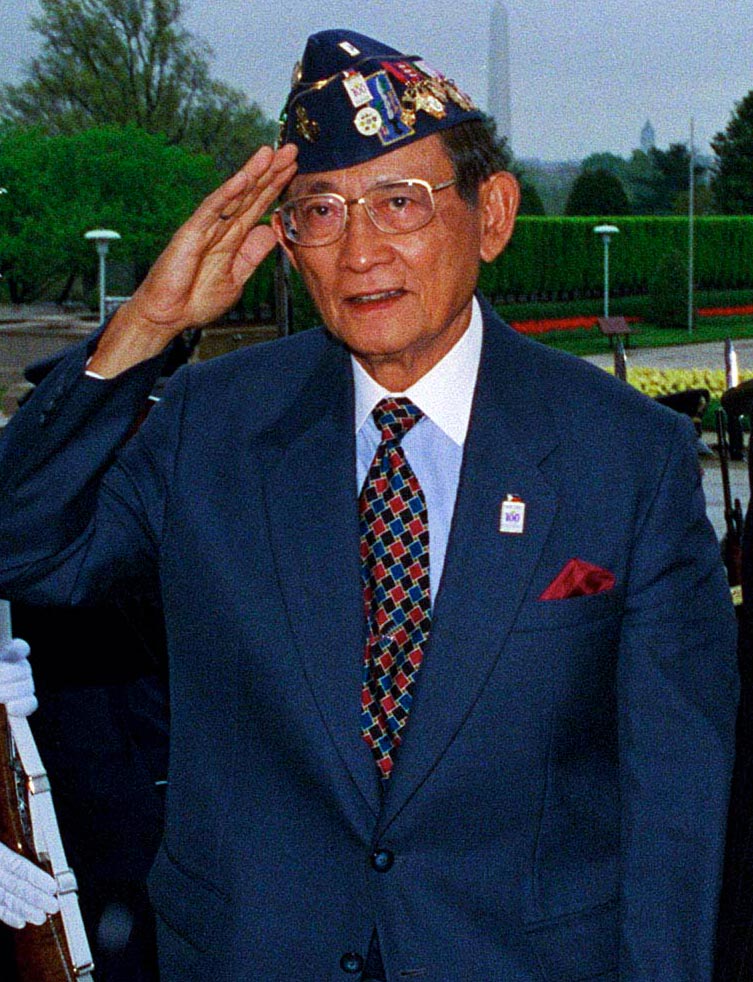News
FVR recalls Pinoy soldiers’ heroism during Korean War

On the occasion of the 68th anniversary of the Korean War on Monday (June 25), former president Fidel V. Ramos, a veteran of the Korean War, recalled the bravery and heroism of the Filipino soldiers who fought against all odds the combined Chinese and North Korean forces. (Photo By Robert D. Ward, Public Domain)
MANILA — On the occasion of the 68th anniversary of the Korean War on Monday (June 25), former president Fidel V. Ramos, a veteran of the Korean War, recalled the bravery and heroism of the Filipino soldiers who fought against all odds the combined Chinese and North Korean forces.
The Philippines was the first Asian country to responded to the urgent call by the United Nations Security Council (UNSC), which was then headed by Gen. Carlos P. Romulo, to send combat troops to help the beleaguered South Korean nation stave off a communist invasion.
The Korean War broke out on June 25, 1950, five years after World War II ended.
Although barely recovering from the ravages of the Second World War, then president Elpidio Quirino got the approval from Congress to send to Korea a 7,500-man Philippine Expeditionary Forces to Korea (PEFTOK) for combat duty.
PEFTOK veterans will commemorate the 68th anniversary of the Korean War at the Philippine-Korean Memorial in Fort Bonifacio in Taguig City on Sunday.
Ramos said PEFTOK has invited President Rodrigo R. Duterte as the guest of honor and speaker during the occasion.
It was during the Korean War that Filipinos displayed anew their combat proficiency, particularly in the Battle of Yultong and the Battle of Eerie Hill, to name just two as PEFTOK troops had figured in numerous fighting during the war.
In the Battle of Yultong, the 10th Battalion Combat Team (BCT), commanded by Col. Dionisio Ojeda, fought the highly superior 44th Division of the Chinese Army during two days of fierce fighting on April 22-23, 1951.
At the height of the fighting, the Filipinos got trapped and lost contact with the outside world.
Nevertheless, the Filipinos held their ground and valiantly fought the Chinese in a fierce and bloody fighting that allowed the US 3rd Infantry Division to withdraw from the area.
It was during the Battle of Yultong that the Filipinos were hailed for their extraordinary bravery in combat, reminiscent of World War II.
Ramos was then a second lieutenant and a fresh graduate of the US West Point in 1950 when he volunteered for combat duty when the Korean War broke out. His unit was the 20th BCT.
In his diary, Ramos recalled his exploits, particularly during the fierce Battle of Eerie Hill. He led a 44-man team that assaulted the strategic plateau occupied by Chinese troops.
As destiny had it, Ramos was later elected as the 12th President of the Republic of the Philippines in 1992.
The 20th BCT was one of the five combat battalions of the PEFTOK sent by Quirino when the Korean War erupted. The other four were the 2nd, 10th, 14th and 19th that saw extensive combat during the Korean War.
The two greatest battles during the Korean War, where Filipino troops proved their gallantry in combat as they did during the Second World War, were the battle of Yultong Bridge and the assault on the strategic Eerie Hill near Chorwon, South Korea.
Ramos volunteered to fight in Korea, together with 364 of his classmates at West Point.
A total of 21 countries, including the Philippines, responded to the appeal of the beleaguered South Korean government for help when South Korea was invaded by North Korea and communist Chinese forces.
Among the five combat battalions, it was the 10th BCT that accounted for the most number of battles, particularly the Battle of Yultong where the Filipinos stood their ground despite being outnumbered.
It was in May 21, 1952 when Ramos was ordered to attack Eerie Hill, which was occupied by heavily entrenched communist Chinese troops.
In an interview, then Major Felizardo Tanabe, 20th BCT operations officer, said that “the mission was a necessary risk as Eerie Hill prevented the United Nations forces from advancing without suffering heavy casualties.
The Chinese enjoyed a vantage strategic position, which afforded them to observe all moving objects in the surrounding plains below.”
Eerie Hill’s landscape is comparable to the plains of Central Luzon where the imposing Mount Arayat is located. But unlike Mount Arayat, Eerie Hill’s configuration is much smaller.
Nevertheless, whoever occupied the strategic hill controlled the roadways down the slopes and the connecting arterial roads spread over a one-mile radius.
Col. Salvador Abcede, 20th BCT commander, ordered Tanabe to organize a team for the assault on Eerie Hill.
Abcede’s order was loud and clear: “The observation post and the bunkers must be destroyed.”
Eerie Hill had been previously assaulted by Abcede and his men nine times, killing more than a hundred communist troopers. The Chinese, however, withstood the attacks.
Capturing Eerie Hill was the obsession of Abcede and ordered Lt. Ramos to see to it that the strategic area would be captured.
An elaborate plan was prepared in the attack on Eerie Hill, including air support and artillery fire.
The night before the assault, they prayed fervently to God for protection.
Swapping shoes with amputees
Jump-off time was before daybreak of May 21, 1952. The assault team was up at dawn to do a final check on their weapons, the M1 Garand rifles, Browning Automatic Rifles (BAR), two .30-caliber machine guns, grenades, bayonets and other equipment.
Ramos had grouped his men into four units: a 13-man sniper team led by Sgt. Cipriano Drapeza; a scout team of 10, headed by Corporal Jose Palis; and a forward observer and rifle teams led by 2nd Lt. Cosme Acoste.
The platoon had one radio operator, one messenger and one medical aid man.
At exactly 4:07 a.m., the platoon moved towards its objective under cover of darkness.
To avoid detection, Ramos and his men crawled for two hours through rice paddies, occasionally tipping their canteens to quench their thirst. The reconnaissance platoon reached an irrigation ditch some 400 meters from the top of Eerie Hill.
Under the tactical plan, seven F-86 Sabre jet fighter-bombers of the US Air Force dropped napalm bombs on the heavily fortified enemy forces.
During the bombing run, Ramos radioed the BCT headquarters to start the artillery bombardment.
Through binoculars, he spotted an entangled stack of blasted barbed wire and decided his troops would assault that part of the hill. He radioed his headquarters to cease firing their artillery.
Ramos and his men moved in quickly firing their guns as close-quarter fighting erupted. The Chinese retreated but kept on firing. At that point, the Filipino soldiers were unstoppable as they gained the upper hand of the fighting.
The Ministry of National Defense of Korea says in its historical account of the Eerie Hill assault:
“From 0700 to 720, Lieutenant Ramos’s four teams (scout, rifle, sniper and forward observer), moved and maneuvered up to the crest of the Hill. As soon as the assault teams reached the barbed wire entanglements of Eerie at 0710, two tanks lifted their fire.”
During the initial stage of the fighting, the 11-man scout team headed by Palis went into action. Heavy exchange of gunfire erupted. Grenades exploded all over the place. As the riflemen kept firing, Palis and two of his men ran toward bunker No. 2, dropped several grenades and fired their guns, killing four Chinese.
Enemy troops occupying bunker No. 3 retaliated. At this point, Ramos joined Palis. Grenades exploded on their right flank, on the left and in front of them. One Filipino soldier was hit.
Hitting the ground on all fours, two of Ramos’ men suddenly dashed toward the bunker and exploded a grenade.
Two enemy troopers got out of the bunker but Ramos, who was just 4 meters away, opened fire, and killed them instantly. As his reflexes heightened, Ramos rolled away and poised to fire again at any incoming enemy but there was none.
Then Palis told Ramos that they were running out of grenades. Ramos immediately ordered his two-man demolition team to move in and blast bunkers 2 and 3.
Then as Ramos and his men were clearing the bunkers, Chinese troops occupying a connecting trench some 200 meters away opened fire at them. They dived for cover as fighting broke out anew, this time against Chinese troopers occupying bunker number 4 .
Two Chinese tried to hurl a grenade at Ramos’ group but they were cut down by bullets before they could throw their hand grenades.
Close-range fighting ensued, including hand-to-hand combat using bayonet. The Filipinos prevailed as the remaining Chinese soldiers retreated hastily. Ramos again requested for artillery fire to make sure the area was clear of hostile forces.
The assault lasted for two hours and mission accomplished.
Of the 44 men led by Lt. Ramos, only one was wounded while the Chinese suffered 16 dead.
The gallantry of the Filipino soldiers had earned praises from the United Nations forces who watched the deadly combat from a distance using binoculars. Two American battalions also watched the fighting from a distance.
For Ramos, it was his first hill and first kill, a soldier’s trek “to hell and back.”
The exploits of the Filipino soldiers’ bravery in combat during World War II, including Bataan and the Bessang Pass episodes, Korean War and a book on the Vietnam War entitled, “Warriors for Peace”, written by this reporter, have been properly documented in various books published by the Philippine Veterans Affairs Office currently headed by retired Lt. Gen. Ernesto G. Carolina, a Mindanao War veteran himself, for the present generation and the generation yet unborn for them to appreciate the gallantry of their forebears in defense of freedom and democracy.





















